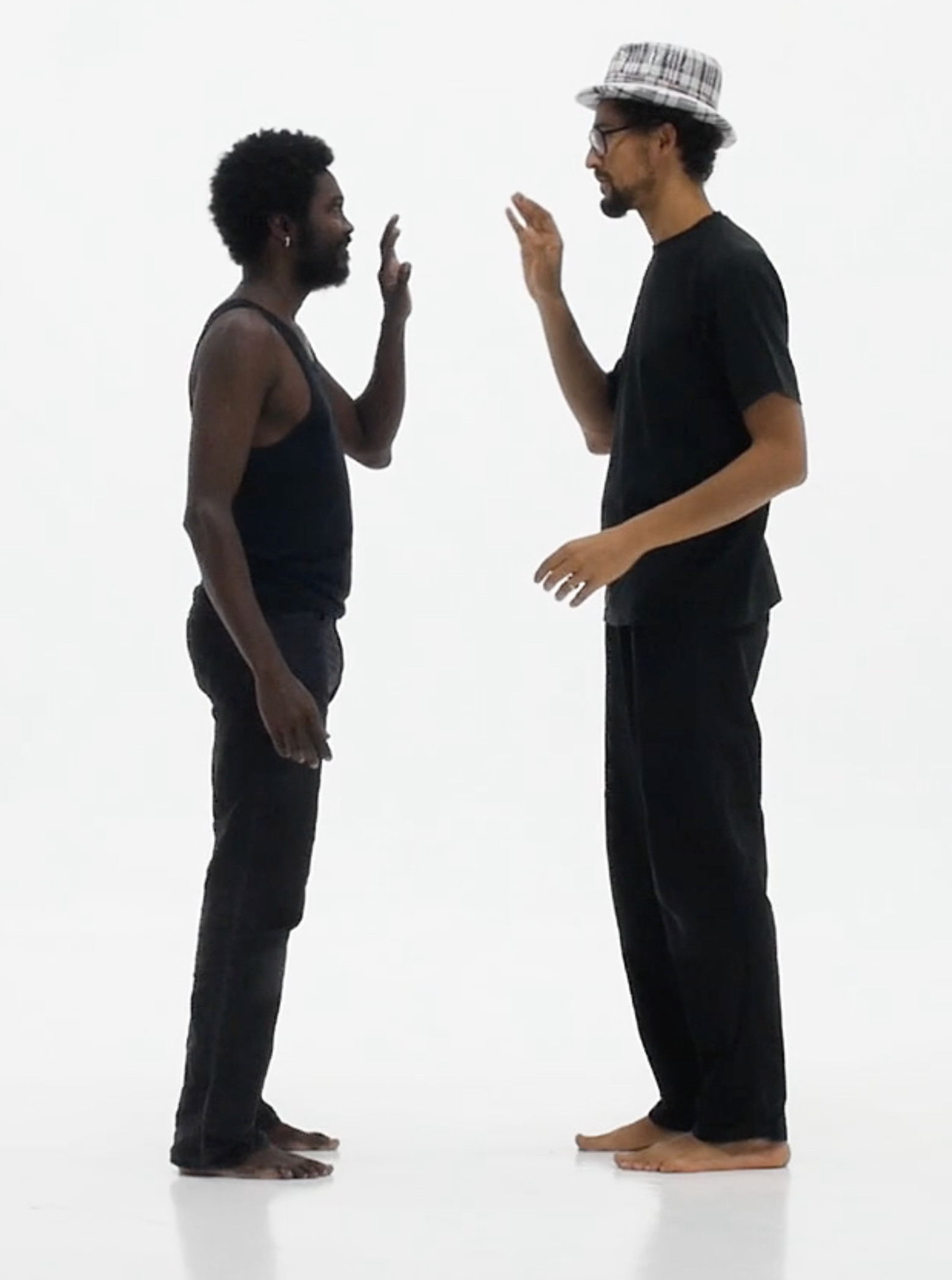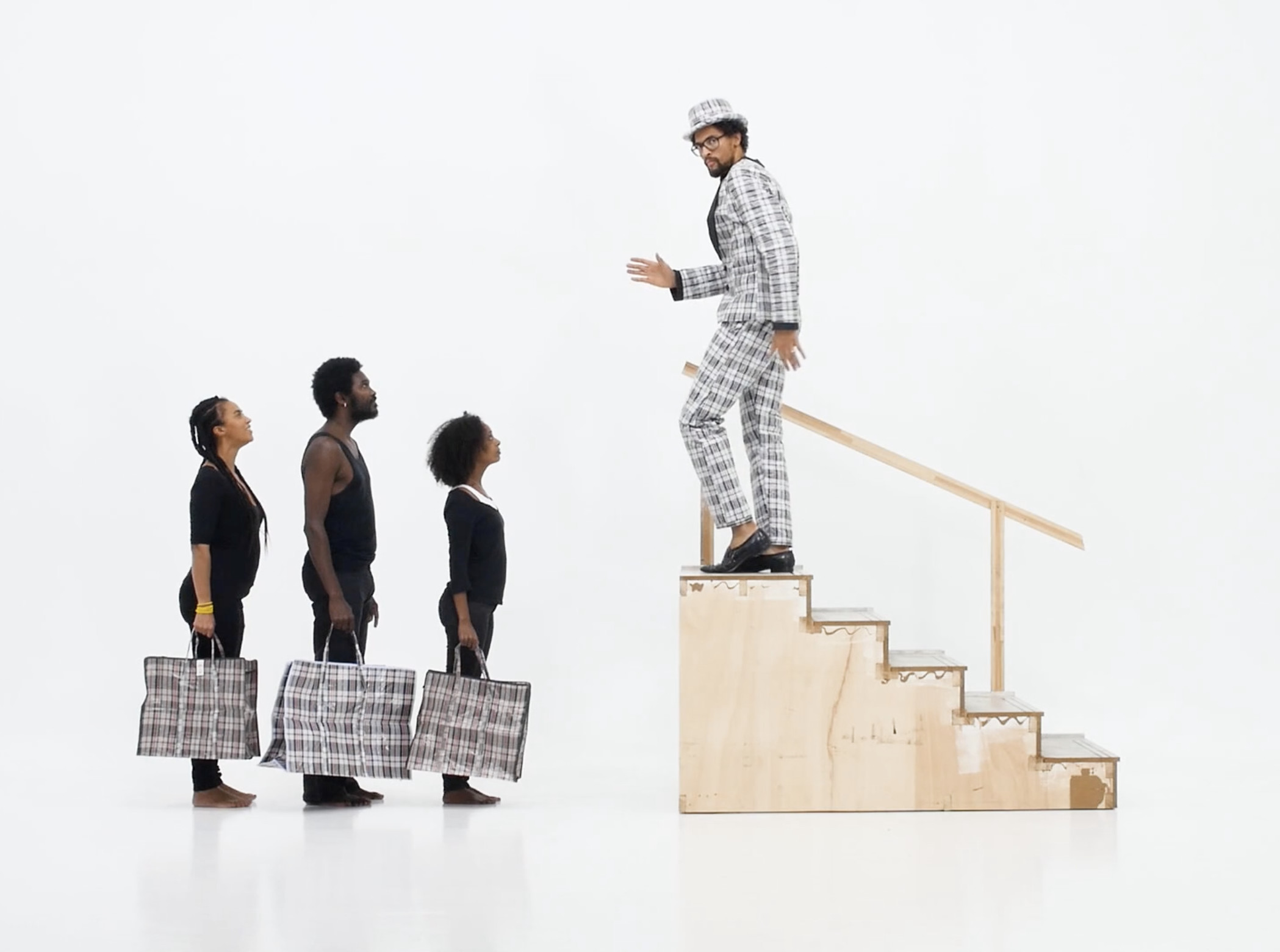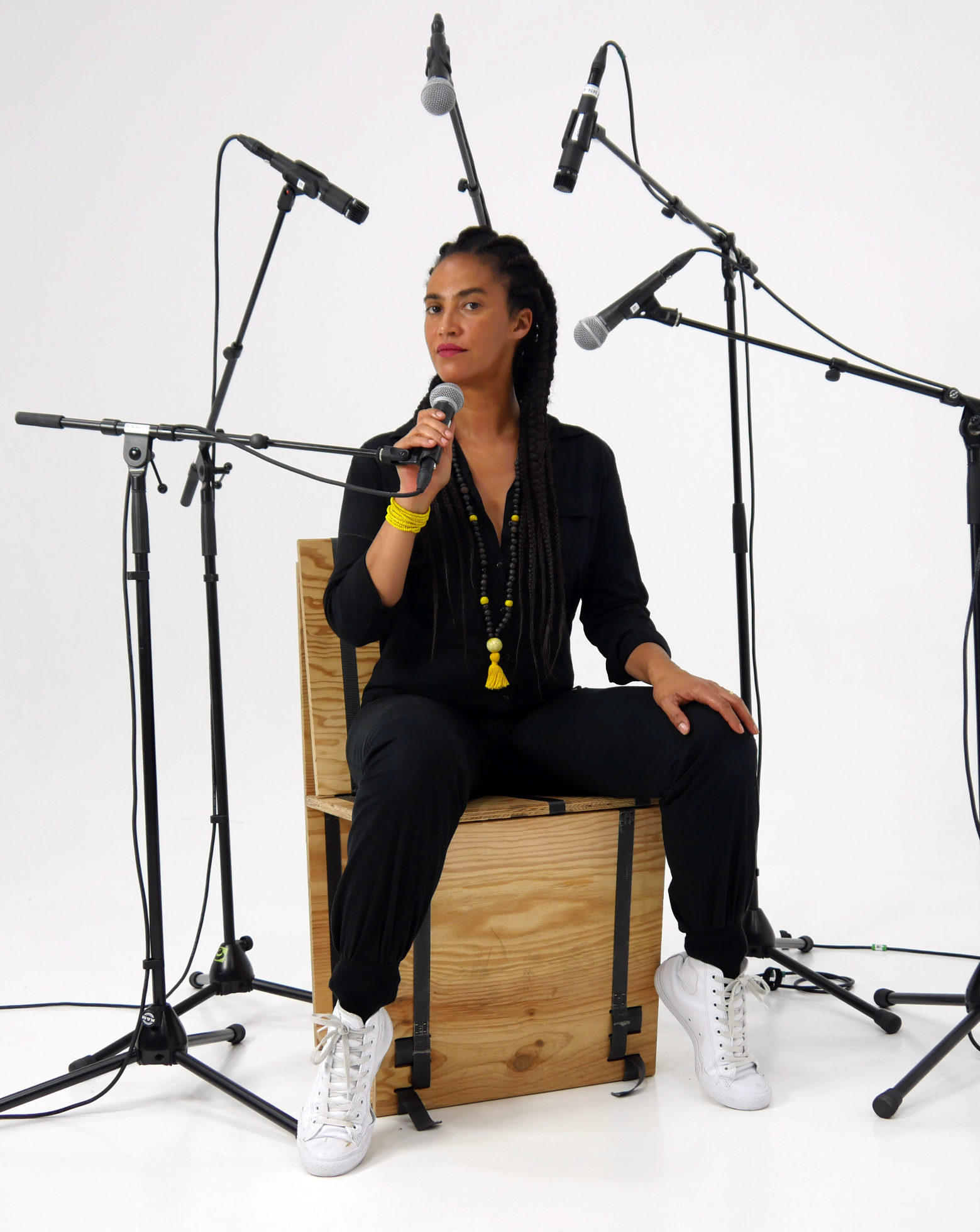Sala10: Grada Kilomba
virtual exhibition
Illusions Vol. I. Narcissus and Echo
Staging the myths of Narcissus and Echo, Kilomba dedicates her two-channel video installation to the politics of misrepresentation and invisibility - using strong elements of performance, theatre and choreography. For the artist, Narcissus becomes a metaphor for a society which has not resolved its colonial history, and takes itself and its own image as the only objects of love. Kilomba questions, how do we break out of this colonial and patriarchal mould?

The Spell of Whiteness
In his Metamorphoses, Ovid tells that the nymph Echo fell hopelessly in love with the hunter Narcissus. Echo had been punished by the goddess Hera, who made her unable to speak for herself, only repeating the last words she hears, thus unable to converse with anyone. When she meets Narcissus, Echo is enraptured by his beauty, but he spurns the nymph’s love. Narcissus’s arrogance, in turn, has led him to fall in love with his own reflection in a pool of water; being unable to love anything but his own image would be his fate. His unattainable desire and her unrequited love repeat themselves in a cycle that will never be broken.
In this piece, the artist Grada Kilomba utilizes this myth to establish an analogy with the postcolonial society in which we live while questioning the politics of representation. Illusions Vol. I, Narcissus and Echo forms part of a trilogy in which Kilomba works with Greek myths to talk about racism and power relations in the contemporary world. Commissioned for the 32nd São Paulo Biennial, it was followed by Oedipus (2018) and Antigone (2019). The title of the series is revealing: illusion, that mirage or deceptive image of reality, that altered perception we have fallen for. In Kilomba’s work, well-known Greek myths reveal new narratives that have been kept invisible. So Narcissus appears as a metaphor for white patriarchy, blinded and unable to see beyond itself, while Echo, dazzled by appearances, remains stuck on a resounding repetition. A spell has been put on her, as in the Nina Simone song. Due to copyright issues, the song I Put a Spell on You, as interpreted by Simone, has not been used in the film since 2018 and Kilomba decided to only use original music, working with the musician/composer Neo Muyanga, who wrote the music for the entire A World of Illusions trilogy.

Narcissus and Echo combines classical literature and oral poetry with music and dance, elements that take on a leading role in the piece’s rhythm and staging. It explores the story through this mixture of theater and performance art, taking up the griot tradition of oral storytelling from West Africa, which has been key in preserving knowledge down the centuries. This spoken word practice survived the slave markets to form the basis for genres such as rap and the blues. Beyond its communicative capacity, the importance of this orality lies in intrinsically implying the act of listening. As the artist herself has theorized, this listening is a way of authorizing the speaker: an enunciating subject that becomes a narration.[1]

In the artist’s own voice, this piece tells us an ancient story, submerging us in a reinterpretation of the Greek myth through its prophetic perspective and its capacity to question the present from the past. This temporal displacement allows Kilomba to reread the present through the act of remembering. Contemporary hegemonic society, narcissistic and wrapped up in itself, constructs an exclusive image of itself, making invisible systematic racist violence and patterns of discrimination that reproduce the colonial past. How can we disrupt this repetition? What are the implications of the politics of representation and structures of legitimation? What are the implications of whiteness?
This piece is full of symbols of this hierarchy and segregation, such as the use of the staircase or the dress of the characters. Narcissus, for example, wears a hat and a checkered suit made out of PVC fabric, the same material as the cheap, disposable bags commonly used by immigrants. This synthetic fabric references the precarious working conditions accepted by the subalterns of hegemonic countries, an exploitation to which Kilomba makes constant reference, echoing the famous question of the Indian philosopher Gayatri Spivak: "Can the subaltern speak?" Or, as the artist has put it, "who can speak?"

Kilomba says that we live in a white cube and this whiteness is present in the piece, which is staged against a white background that alludes to the "white cube" conception of the exhibition space. This term, coined by O’Doherty in 1976, makes reference to the supposed neutrality of the exhibition space—specifically in terms of modern art—in which pieces are presented as isolated from any outside contamination. Indifferent to interference. To identities. In Illusions Vol. I, Narcissus and Echo, the white cube is occupied by the black body, the presence of blackness, in another gesture that makes clear the institutionalized racism of contemporary society.
This marginalization, as Kilomba argues in the piece, emerges from a “triple ignorance: one does not know, one does not have to know and, actually, one should not know… not having to know is a privilege that not all of us have.” Given Echo’s inability to speak, Kilomba gives the spectator the opportunity to choose their role in the narrative. She closes the piece with these words: “I often feel that we all know everything already, we just tend to forget it.” We play a game of mirrors with what we want to see, under the spell of whiteness.
Virginia Roy
[1] Grada Kilomba, Plantation Memories, Berlín, Unrast, 2010.

Whispered Stories for Forgetting One’s Name
By Rafael Mondragón Velázquez
1.
A soft voice cuts through the silence of enclosure. A whisper that calls us to patience. In the midst of the distress of this time of death, the whisper is the voice that vibrates, skin that speaks to skin, incarnated thought that breathes and, in its breath, spurs on experience: it calls us to stop doing two or three things at the same time. This is a warning to the reader: the piece you’re about to watch is 30 minutes long, so you’re going to have learn to be with it in another way. [...]
COMPLETE TEXT HERE
A collaboration with Teatro UNAM

Grada Kilomba
(Lisbon, 1968; lives and works in Berlin)
Grada Kilomba is an interdisciplinary artist and writer, whose work draws on memory, trauma and post-colonialism, interrogating concepts of knowledge, power and violence. “What stories are told? How are they told? And told by whom?” are constant questions in Kilomba’s body of work. Best known for her subversive writing and her unique practice of storytelling, in which she gives body, voice and image to her own texts—using staged reading, performance, choreography, video and installation. Her highly thought provoking and poetic works have been presented at São Paulo Biennial (2016), Berlin Biennale (2018), Lubumbashi Biennale (2019) and Documenta (2017), among others.
Grada Kilomba, Illusions Vol. I. Narcissus and Echo, 2017
Two-channel video installation, HD, colour, sound
30’ 38”
Written, Directed, and Edited: Grada Kilomba
Production: Moses Leo
Music Composition: Neo Muyanga
Actors, Dancers and Performers: Echo, Martha Fessehatzion; Narcissus, Moses Leo; Narcissus Love, Zé de Paiva; nymph and storyteller, Grada Kilomba
Director of Photography: Zé de Paiva
Camera Assistance: Laura Alonso, Tito Casal
Costume Design: Moses Leo
Sound Engineering: Gabriel do Val
Commissioned by and for the 32nd São Paulo Biennial
With the support of the Goethe Institut São Paulo
This piece received the Grant Award of the International Film Festival Rotterdam, 2018

Curator: Virginia Roy
Curatorial coordination: Ana Sampietro, Jaime González
Chief curator: Cuauhtémoc Medina
Texts: Virginia Roy, Rafael Mondragón Velázquez
Spanish translation: Jaime Soler Frost
English translation: Julianna Neuhouser
Media outreach: Ana Cristina Sol
Content editing: Vanessa López
Graphic design: Andrea Bernal
Press management: Francisco Domínguez, Eduardo Lomas
Communication: Ekaterina Álvarez



